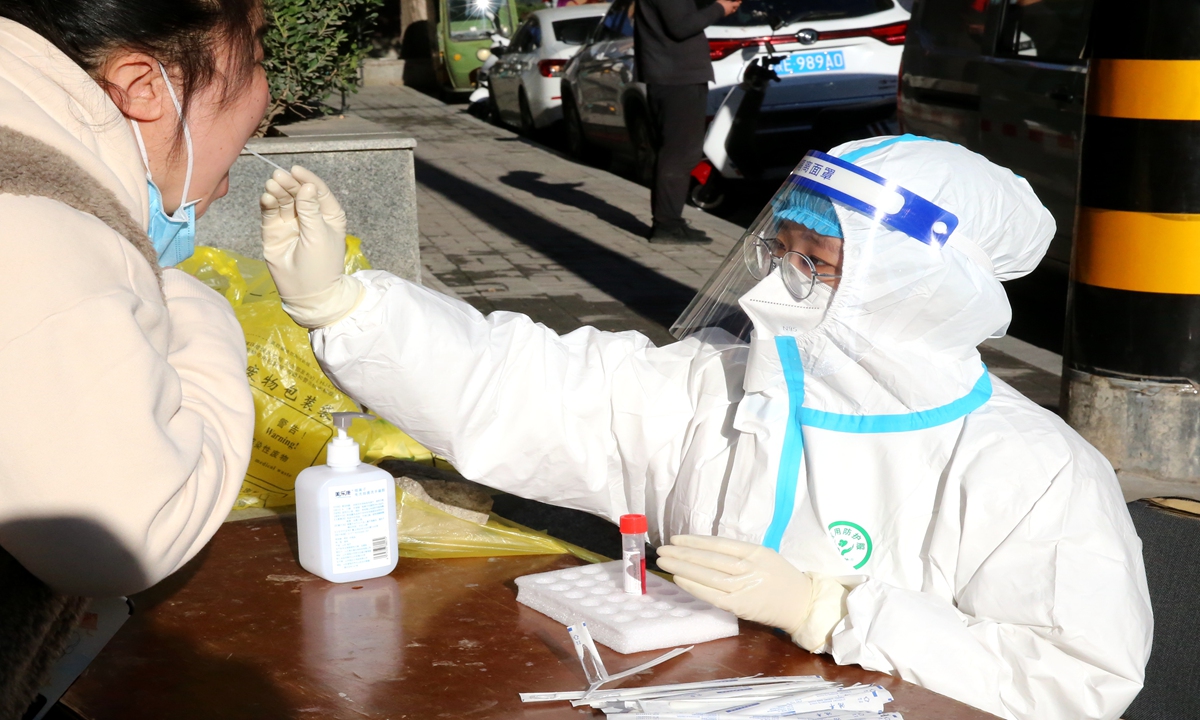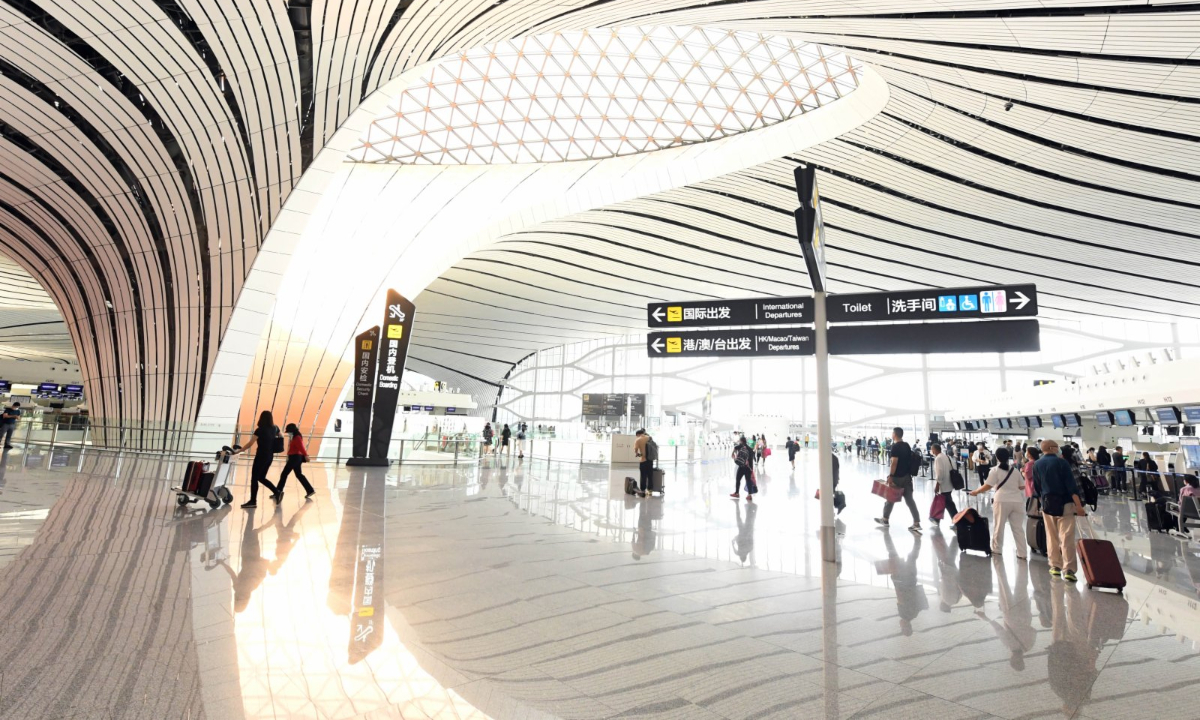China made its latest move in scientific and precise epidemic control and prevention work to fight the COVID-19 epidemic amid a global resurgence by releasing 20 optimized measures on Friday. These include shortened quarantine periods for international arrivals and cancelation of circuit breakers for inbound flights in order to better carry out scientific and precise epidemic control and prevention work under the dynamic zero-COVID strategy while adapting the strategy to the latest global pandemic situation and the characteristics of the virus in a timely manner.
The newest steps made bold adjustments in some of China's epidemic-management measures, including shortened quarantine periods for international arrivals and close contacts of confirmed cases from 7+3 (seven days of centralized quarantine and three days of health observation at home) to 5+3.
The measures required the timely screening of close contacts of confirmed cases, but no longer required the screening of close contacts of close contacts, or secondary contacts.
The circuit breaker mechanism on inbound flights to China upon detecting positive cases on board has also been canceled. Passengers of inbound flights to China will only need to provide one negative nucleic acid test result within the past 48 hours instead of two, according to the latest measures.
The move came one day after the Standing Committee of the Political Bureau of the Communist Party of China (CPC) Central Committee met on Thursday to hear a report on the COVID-19 response, when it discussed and arranged the 20 measures. The meeting, which reiterated that China will unwaveringly stick to its dynamic zero-COVID policy, also emphasized that key areas should curb viral infections as soon as possible and restore normal life and production, optimize COVID-19 prevention work and implement more precise measures, and roll out vaccinations, as well as research and development of COVID-19 medicines.
It also came after problems of excessive and one-size-fits-all anti-epidemic measures in some parts of the country have been exposed amid the fresh flare-ups in China, triggering heated discussion on social media platforms.
Chinese analysts said the 20 measures are based on hard-earned scientific experience gained by China in the past three years in combating the virus, aim to achieve a better balance of protecting people's lives and ensuring production and will have great impact on future epidemic prevention and control work.

A medical staff gives a nucleic acid test to a resident in Xi'an, Northwest China's Shaanxi Province on Monday. Photo: VCG
Timely adaptation, prepare for the futureThe measures were optimized as the SAR-CoV-2 is continuing to mutate, the global epidemic is still spreading, and flare-ups are emerging in some domestic places. These facts require Chinese authorities to adapt to the characteristics of the rapid spread of the virus, take more resolute and decisive measures to curb the spread of the epidemic as soon as possible, and concentrate on fighting the epidemic in key areas, according to a statement released by the Joint Prevention and Control Mechanism of the State Council on Friday.
Optimizing the measures does not mean China is relaxing its epidemic control and prevention, and still less that China is letting go or "laying back" on epidemic control and prevention, but that China is adapting to the new characteristics of the epidemic situation and the virus while sticking to the existing strategy in order to increase the scientific nature and the preciseness of the epidemic control and prevention work, so that people's lives and health can be protected to the utmost and the impact on the economy and society can be kept a minimum, read the statement.
Tan Xiaodong, an expert on public health from Wuhan University, told media on Friday that the 20 measures reflected Chinese authorities' comprehensive review and analysis of the past three years' experience in combating the epidemic.
It is based on the precise analysis and the measures show more significance in guiding future epidemic prevention and control work, and will have a great impact on future steps, Tan noted.
China has constantly optimized its prevention and control measures in line with the global epidemic situation, and on the condition of ensuring safety for people's lives, Tan noted. "So we take a step-by-step, and steady exploratory form, and finally achieve the goal [of reopening]. What we need now is everyone's patience and confidence. On the basis of protecting our own lives and safety, taking small steps forward, this is the most hopeful way to achieve our goal," Tan said.
Although the point for China to totally reopen has not come yet, every step the Chinese government takes, whether it is adjusting its policies or promoting mass vaccination, is in accordance with the situation and aimed at making preparations for future reopening, an expert in the epidemic prevention and control system told the Global Times on condition of anonymity on Friday. Omicron, the main dominant variant of SAR-CoV-2, has shown an increasingly fast spreading speed but decreasing severity. It is still difficult to predict whether a faster mutation will emerge, the expert said.
The latest measures on Friday had called for promotion of mass vaccination in China, especially the administration of booster shots among the elderly. The measures also urged accelerated research and development into broad-spectrum vaccines and drugs.
As for mass vaccination, the highest priority for China is to get as many people as possible fully vaccinated as long as they are qualified for vaccination. Another urgent issue is encouraging the elderly to get booster shots, according to the anonymous expert.
As of November 4, more than 3.4 billion doses of COVID-19 vaccines had been administered in China, 1.2 billion people had been fully vaccinated and more than 800 million booster shots had been administered, national health officials said at a press conference on November 5.
China's capital city Beijing and North China's Tianjin Municipality have started to provide aerosolized adenovirus vector vaccines as booster shots starting from Thursday following a couple of cities including Shanghai, as COVID-19 flare-ups caused by highly transmissible Omicron variants have been reported across the country, with numbers of new infections, particularly in Beijing, rising lately.
China's largest vaccine producer Sinopharm and US pharmaceutical giant Merck Sharp & Dohme (MSD) also signed a cooperation framework agreement in September, under which Sinopharm would be a dealer and exclusive commission agent of MSD's antiviral COVID-19 medicine in China.
The optimized measures certainly do not mean we can slacken in our response or even simply end COVID restrictions and lie flat. China has improved and adjusted its containment measures in response to the way the virus mutates. The adjustment is not only science-based, but also necessary. We hope everyone will continue to show understanding and support for our response efforts, Zhao Lijian, a Chinese Foreign Ministry spokesperson, said at a press conference on Friday.
As for the matters concerning flights and cross-border tourism, Zhao said he believes the improved measures China has just rolled out will help improve cross-border tourism and travel, and ease the travel of global investors to China.
Some Chinese local authorities quickly followed up on Friday to adjust local quarantine and nucleic acid testing policies.
Beijing municipal authorities held a meeting on Friday afternoon vowing to implement the 20 measures.
Health officials of Guangzhou in South China's Guangdong Province, where a flare-up is emerging, announced at a press conference on Friday afternoon quarantine period for international arrivals would be adjusted and all secondary contacts would be released from quarantine.
The Guangzhou health officials vowed to continue optimizing local epidemic management work and implementing scientific and precise measures.
Guangzhou, a factory and transportation hub in southern China, has been suffering its "most complicated and severe" COVID-19 epidemic in three years while facing pressure to resume normal production and daily life.
Experts agreed that the optimized measures would help Chinese authorities to achieve the balance with detailed guidance, but also noted that the optimized measures had raised higher requirements for local authorities. This means that Chinese local authorities need to carry out more scientific and precise measures and react more quickly to prevent virus transmission.
"A key to these optimized measures I see is reducing the impact of epidemic management work on people's lives and protecting vulnerable groups as much as possible," Zhuang Shilihe, a vaccine and epidemic expert based in Guangzhou, told the Global Times on Friday.
Chinese capital markets also reacted to the news with a big rally on Friday. Trading on the Shanghai and Shenzhen stock exchanges exceeded one trillion yuan ($140 billion), up nearly 300 billion yuan from the previous day's trading.
The Shanghai Composite Index closed up by 1.69 percent, nearly regaining its 3,100-point plateau. The Shenzhen Component Index edged up 2.12 percent, while the ChiNext Index was up 2.04 percent.
Meanwhile, the onshore yuan strengthened more than 1,600 points, while the offshore yuan touched a high of 7.0550 per dollar during intra-day trading, the most robust in more than a month.





